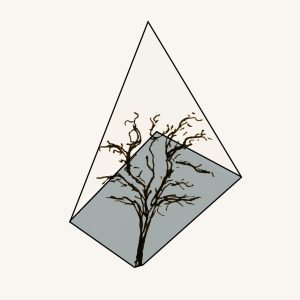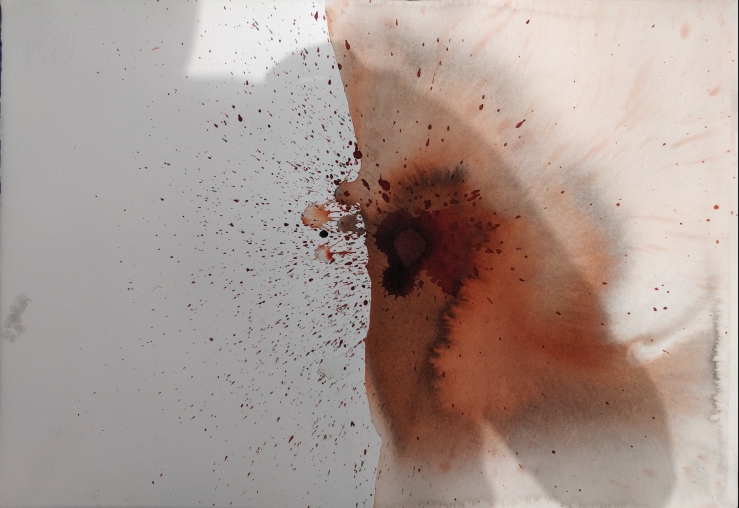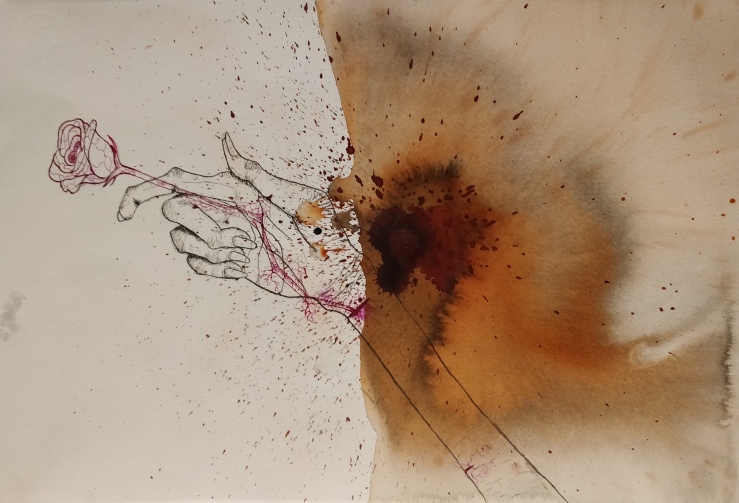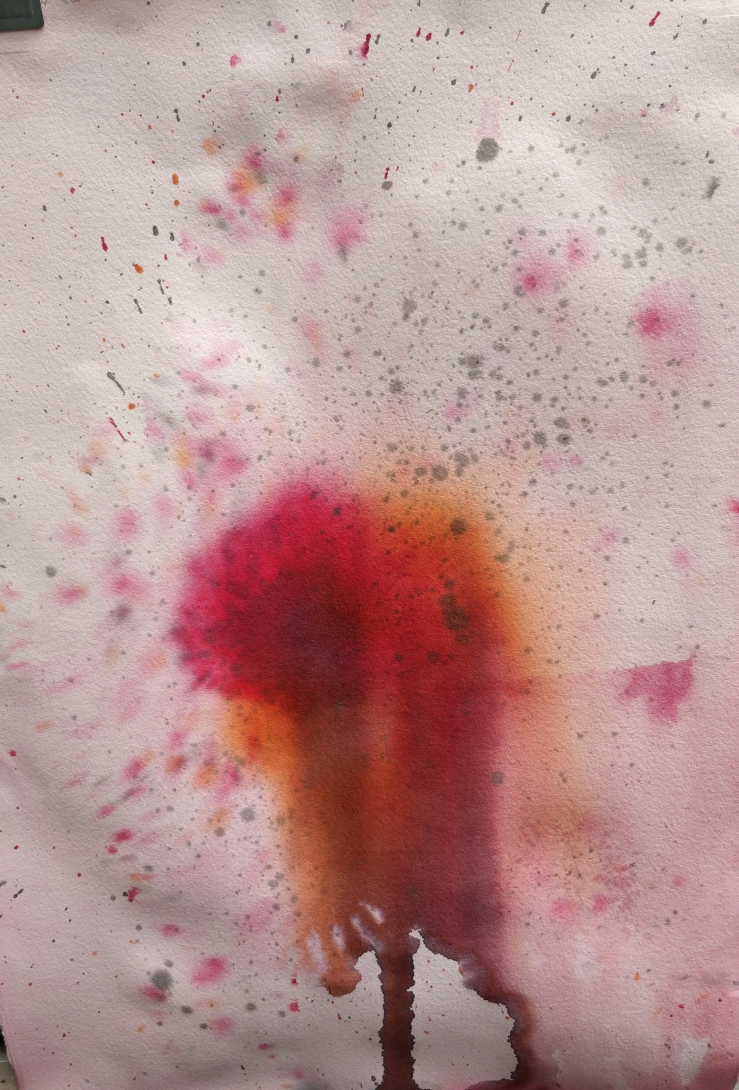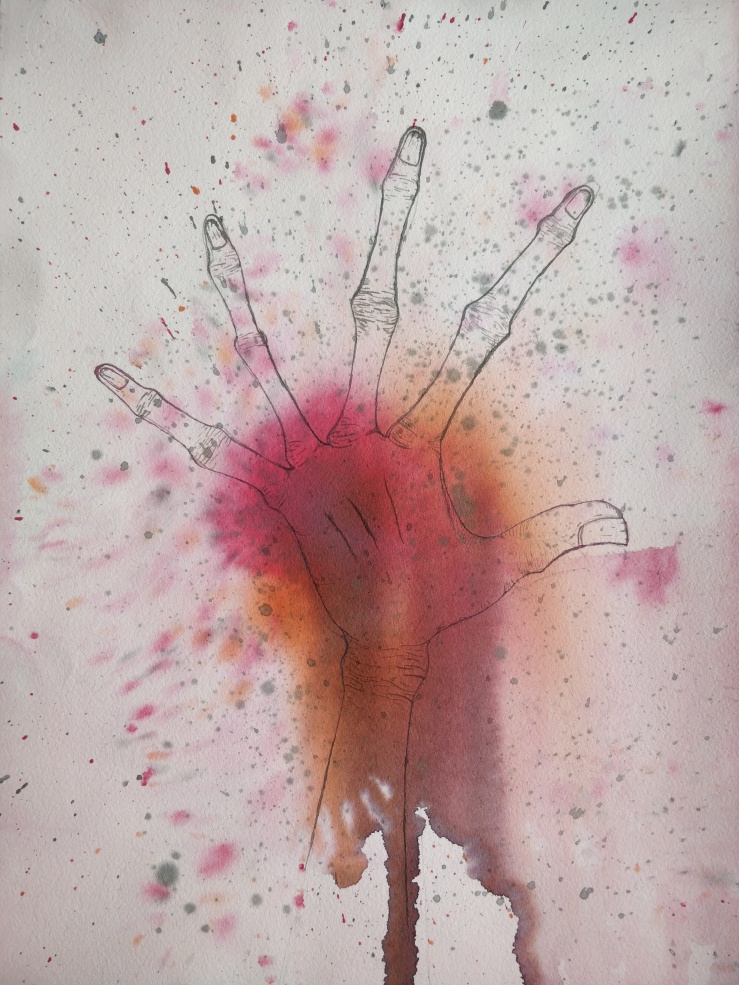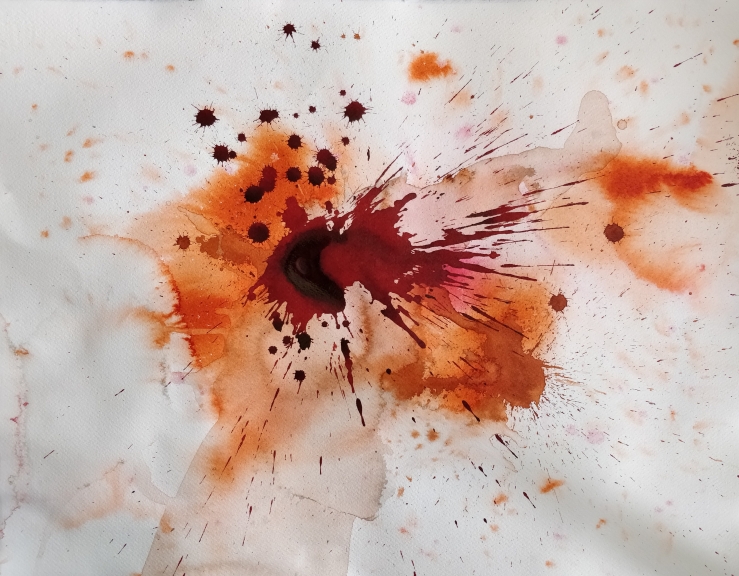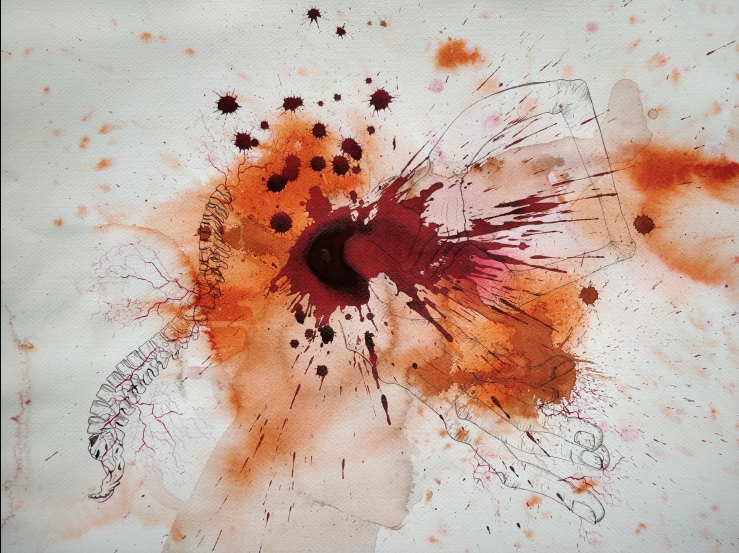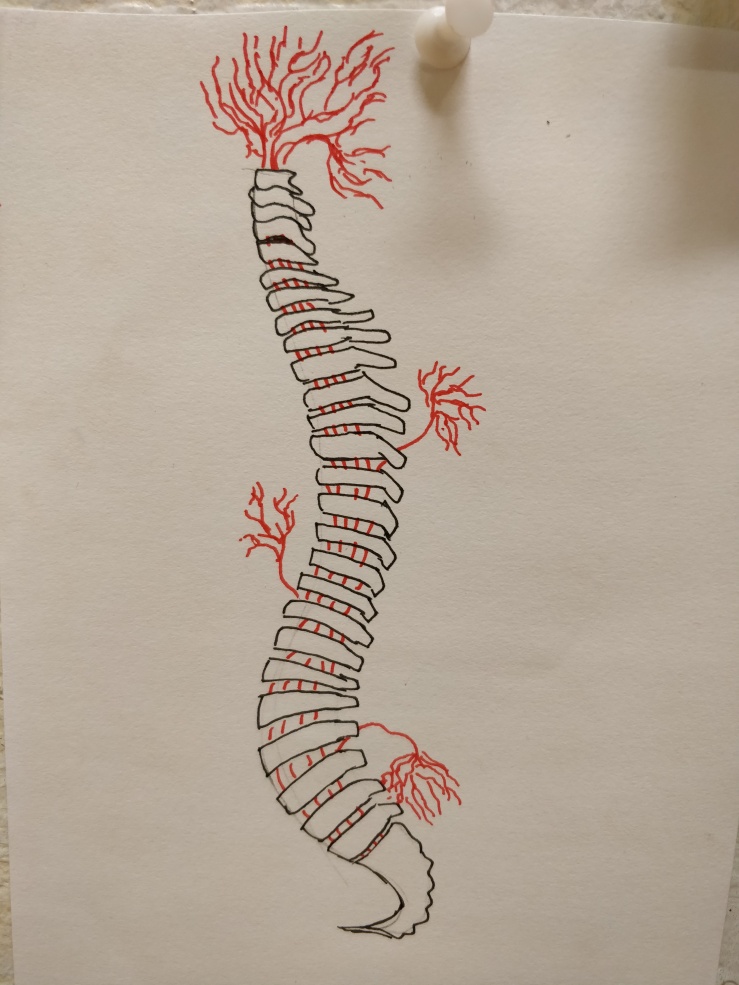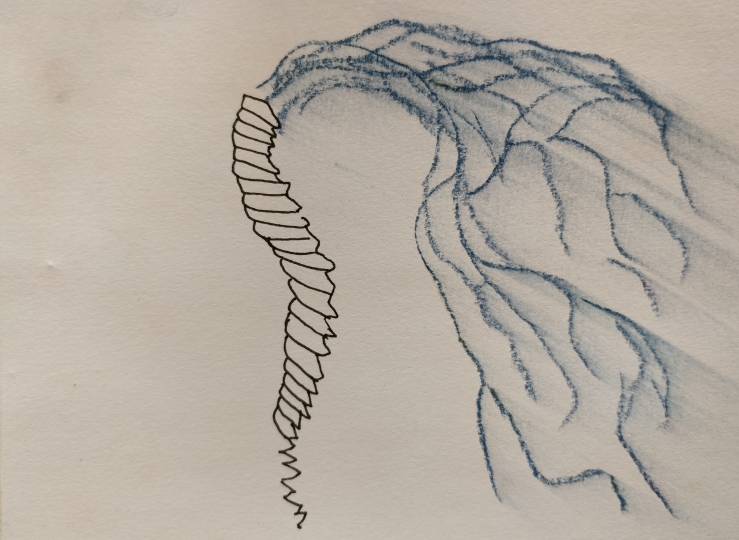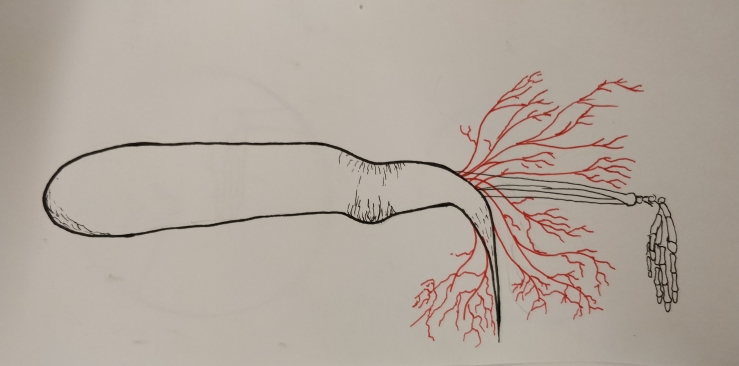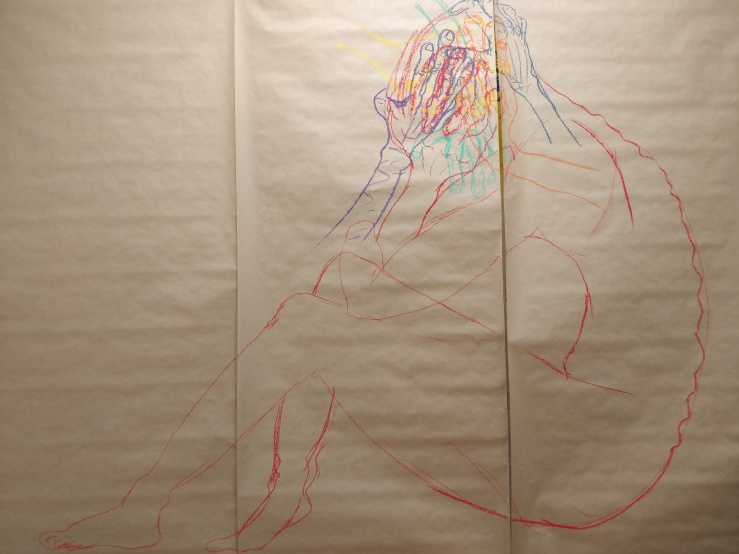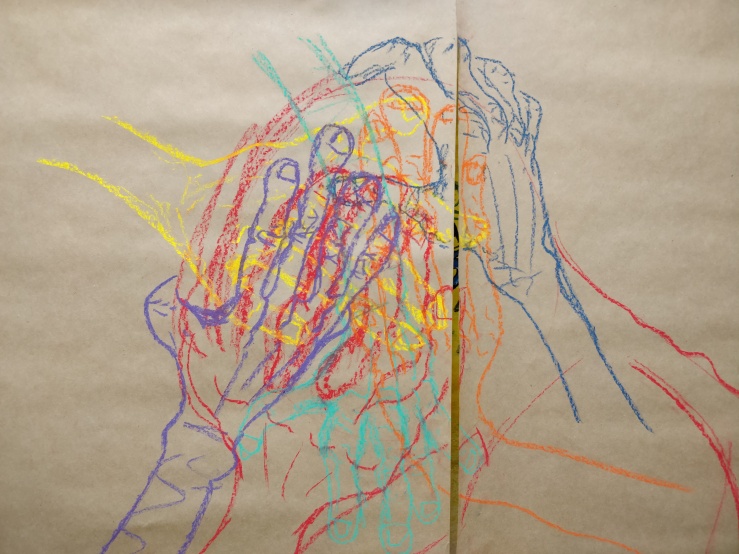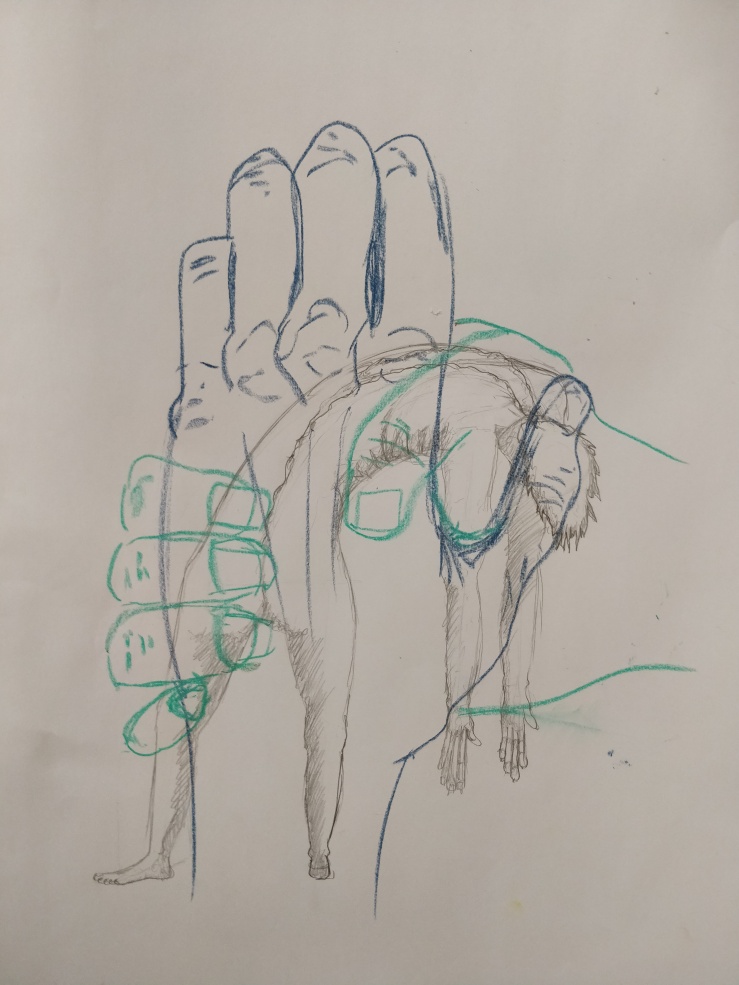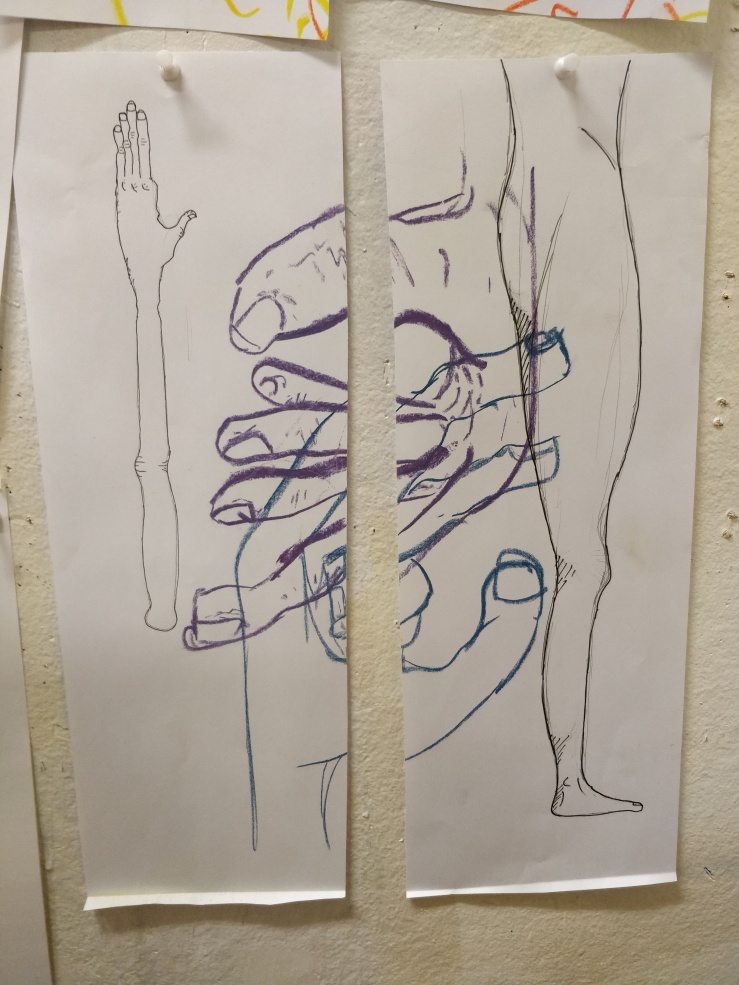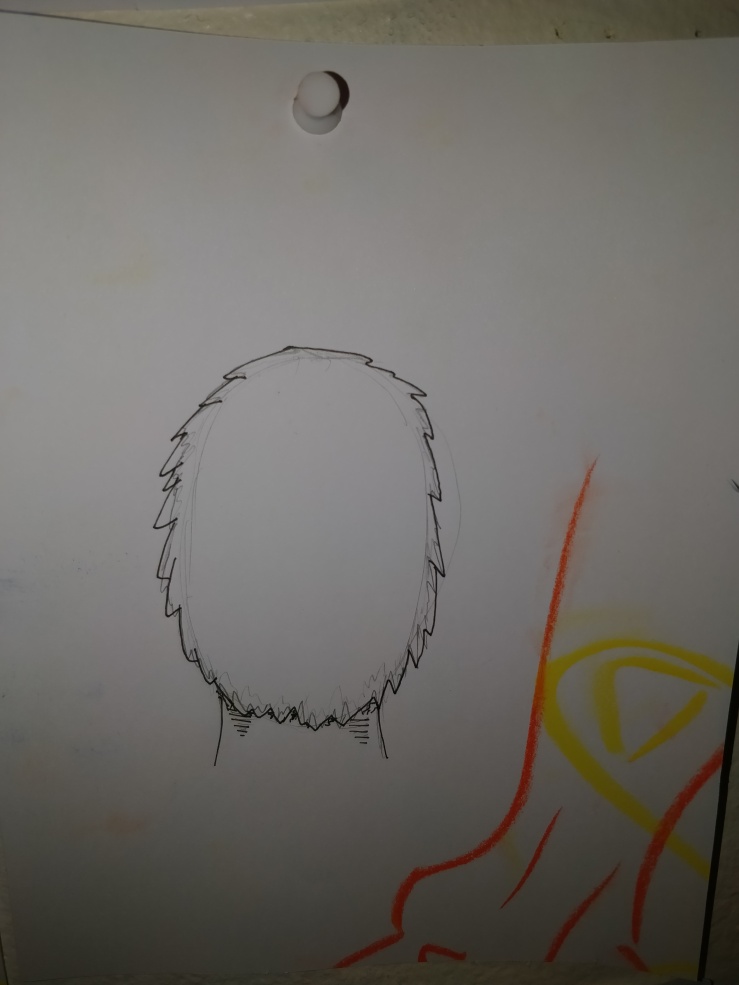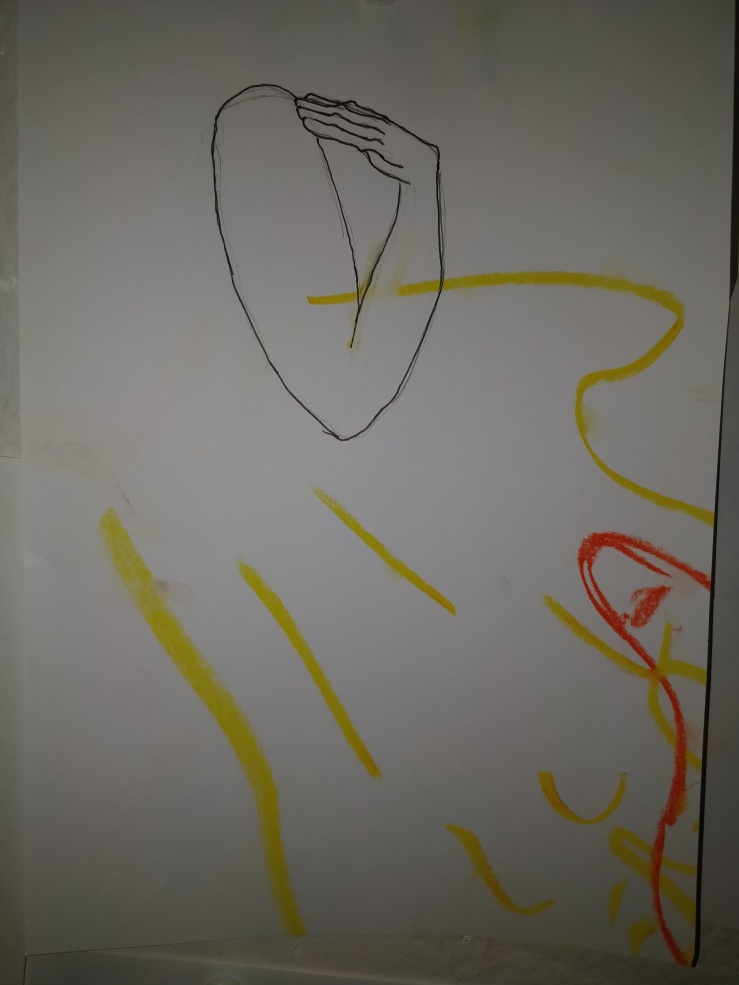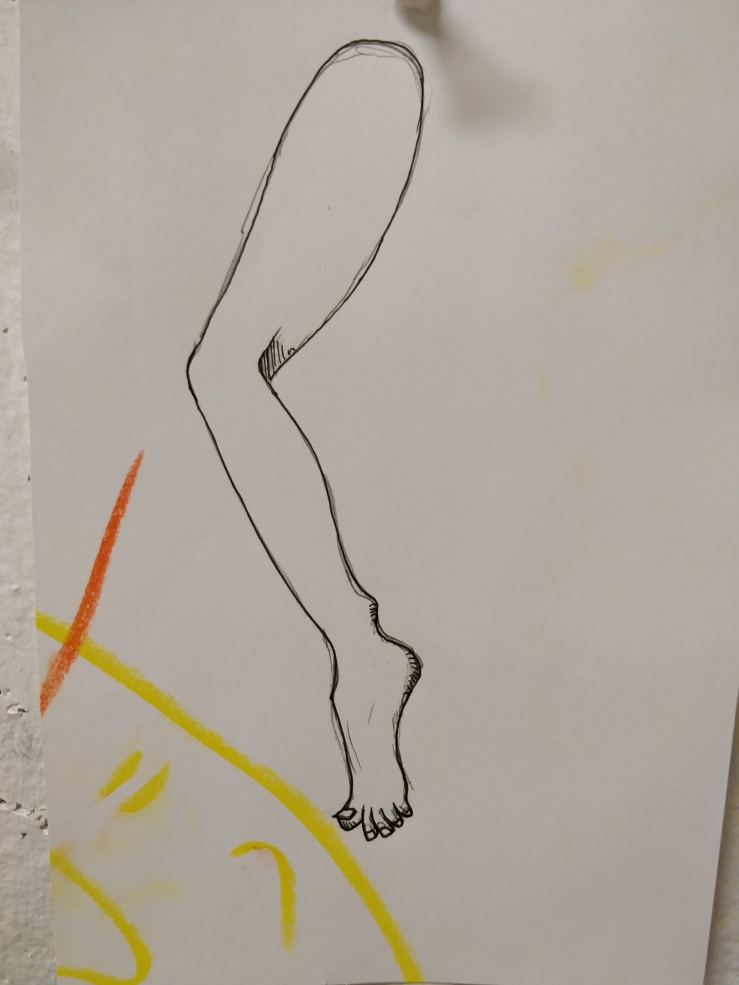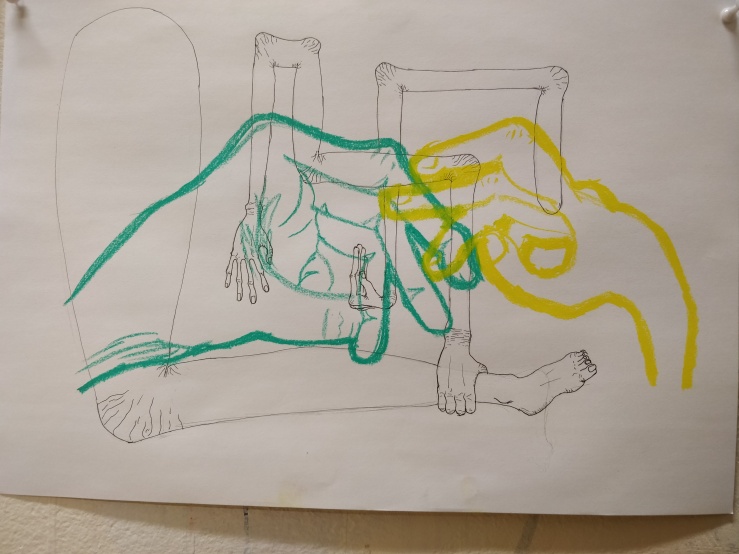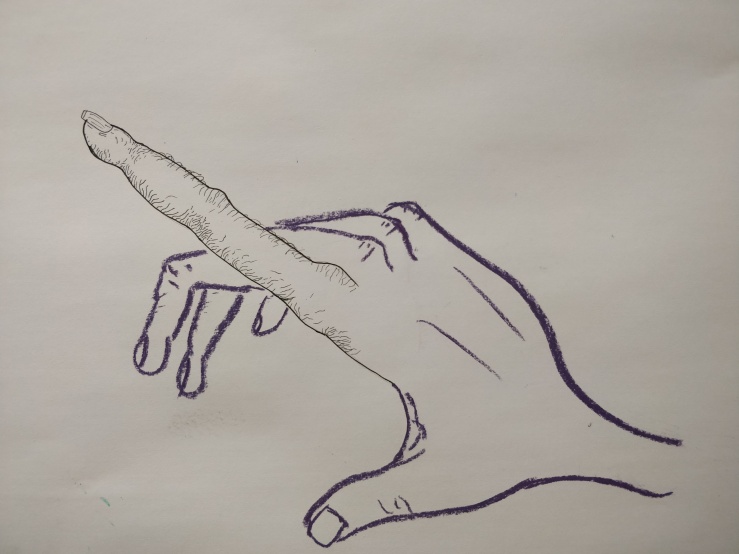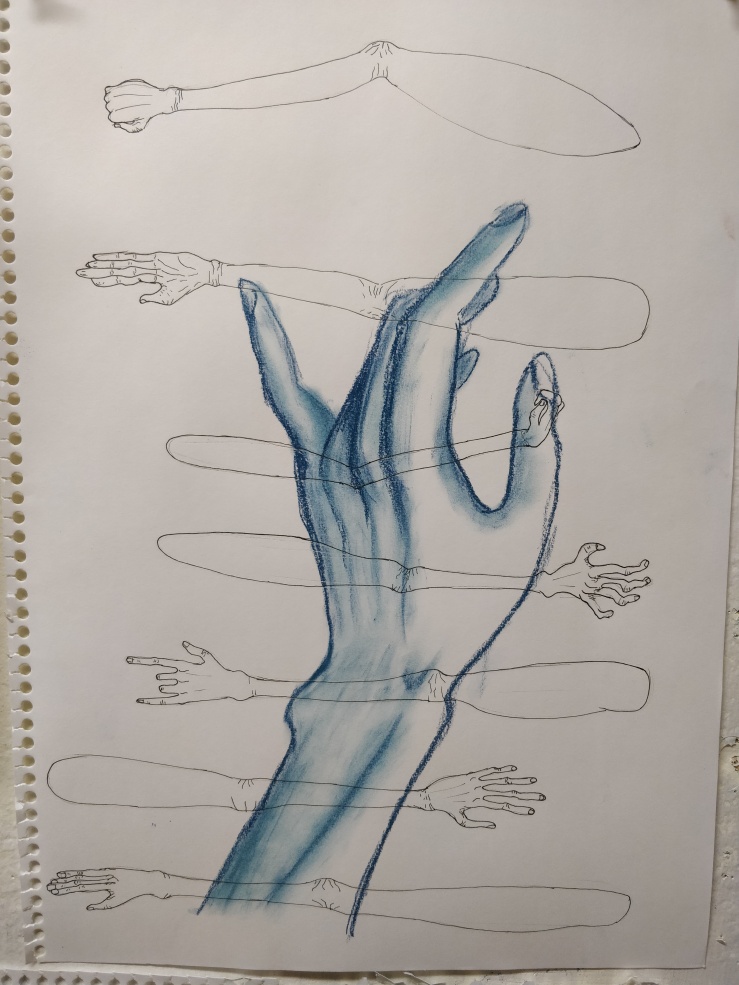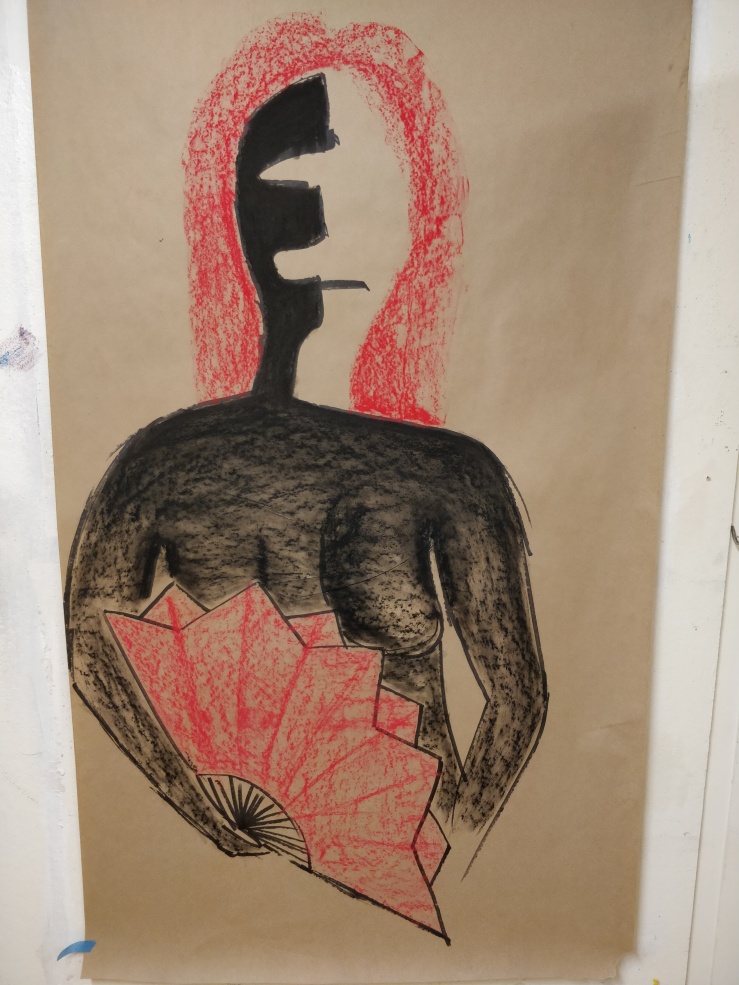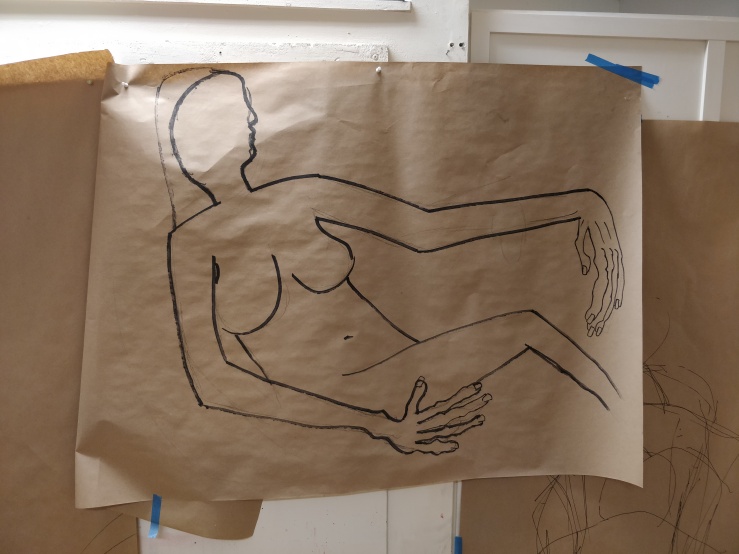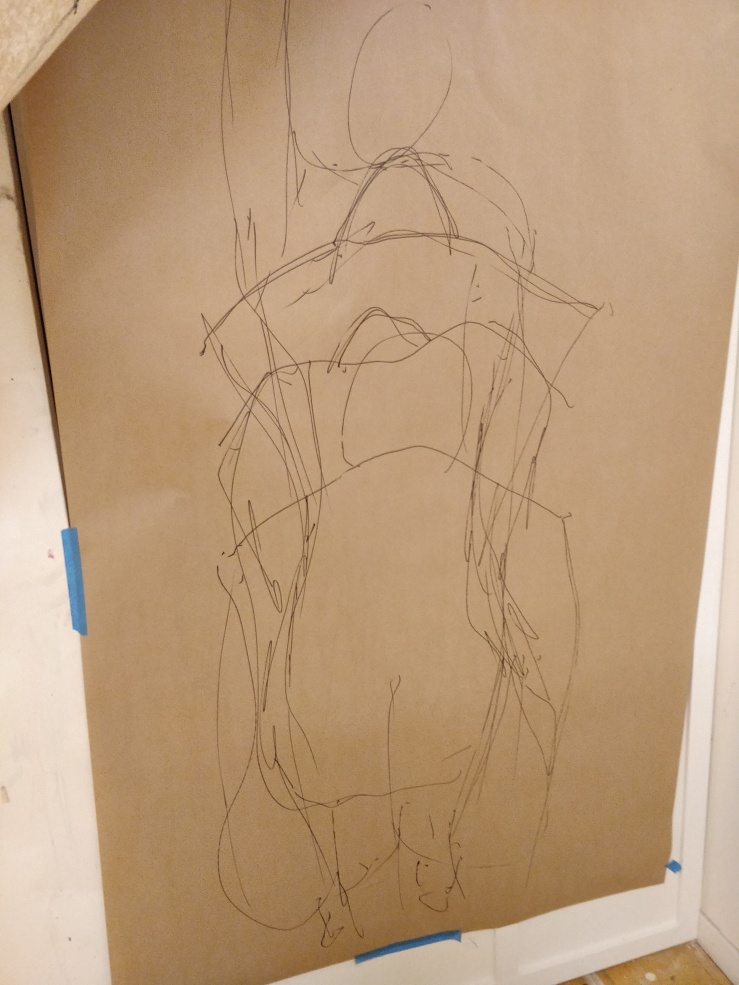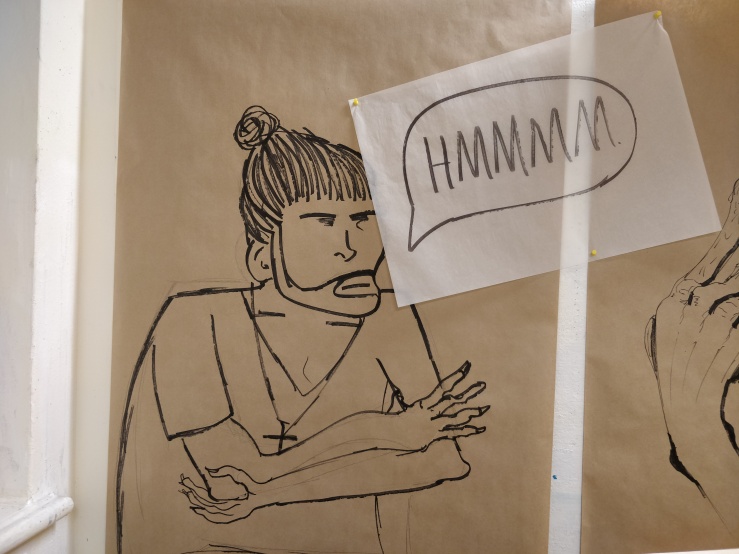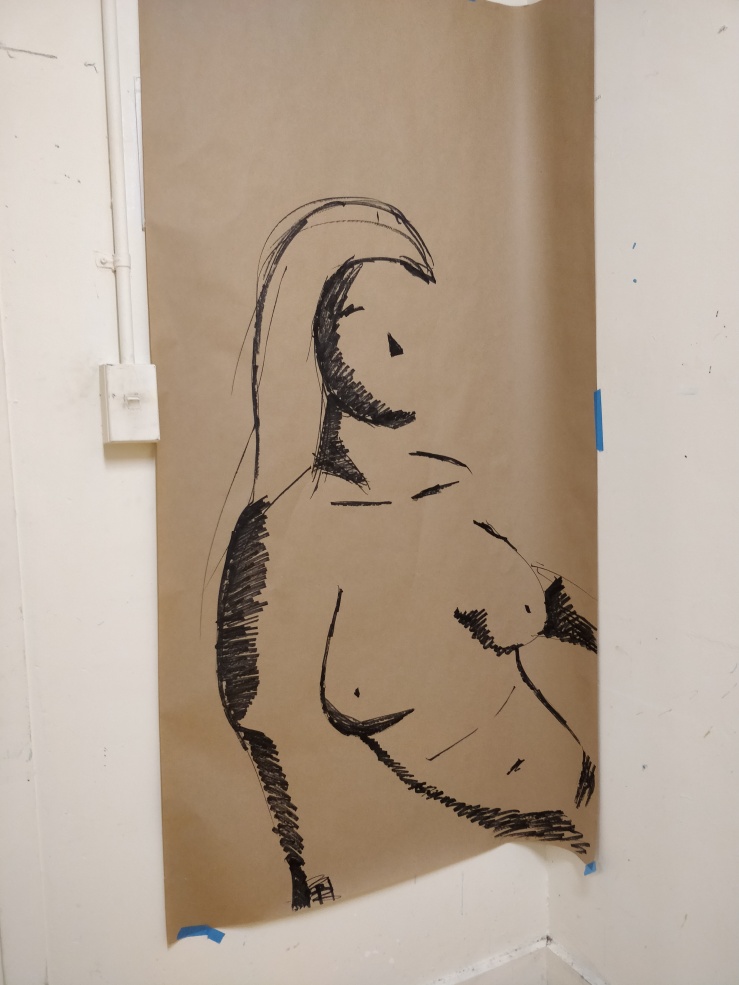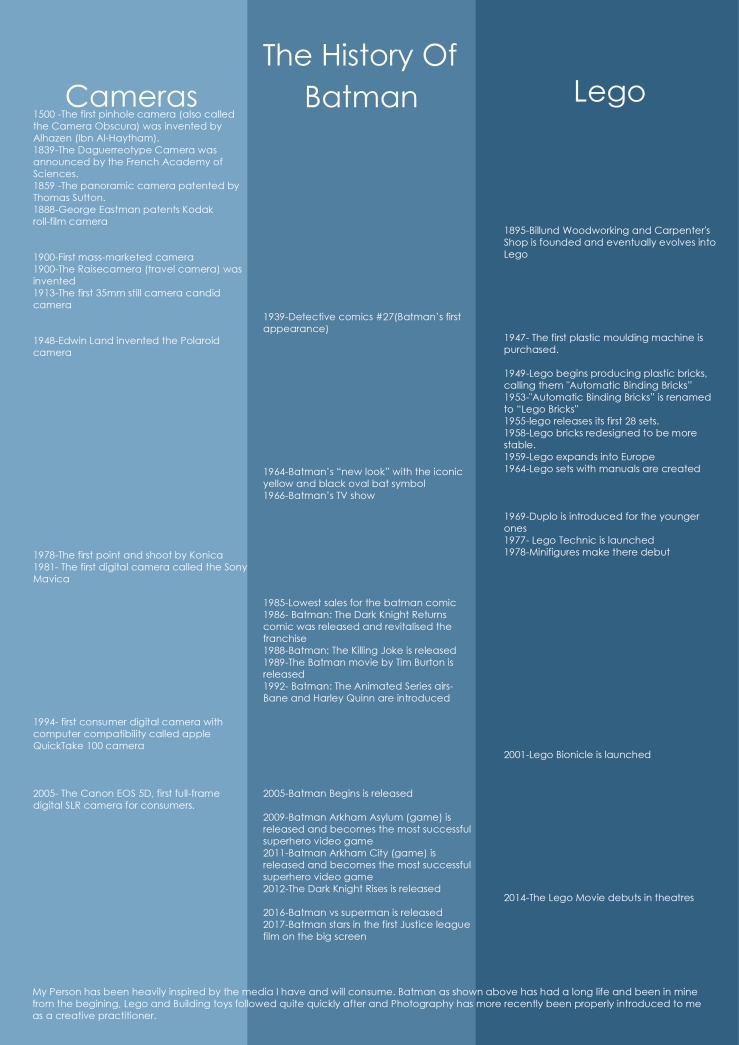(7/5)
I came into contemporary arts practice to continue my life drawing class from the previous semester. I knew from the beginning that I would want to further improve my drawing skills from the previous semester. I also wanted to experiment with the figure style of Egon Schiele who would slightly exaggerate and extend the limbs and fingers of his forms, especially in his self-portraits. Equipped with this knowledge I started on my work.
The first few pieces were reconstructions of previous works in the attempted style of Egon. These weren’t very successful until I got to the hand image, which led me down the path of grotesque mutated hands. As I honed my own drawing and style of hands, new ideas emerged and I introduced bloody veins similar to vines and other plant structures. The thought that sparked this was, “what if veins grew outside the body?” I applied this form to hands with cuts and the veins growing out and around them. This was also done to skulls and bones as I explored within the body as well.
For my three final pieces I implemented an ink background which tried to mimic a bloody accident captured on a page, for example: Human organs appearing similar to my previous blood drawings. Similar imagery was dawn on top of the backgrounds using black and crimson inks. This was done to simulate a more raw drawing style using implements such a calligraphy nib which allows the ink to travel and spread in a more natural way rather than a pen that will create more consistent and uniform lines. This more natural look was also aided by the ink background as drawing on top of this will cause the ink to spread and blur.
This inconsistency is meant to reflect the human body in as much as no two of us are the same. As I looking back now on my work, there is an idea of mutation and evolution which is seen as a positive here. However very rarely do we see a mutation in humans as good and often calling the more visible ones a deformity that we must fix. Granted many do need to be fixed as they inhibit the quality of living of these people affected but not all require this. This negative connotation is probably due to the most common and most publicised mutation in humans, Cancer, which is a mutation of the cells that cause uncontrolled growth. This negative connotation has an irony to it as we are, as a species are a result of many mutations that have played a major part in human development.
The inclusion of the vein plants was an attempt to pull humans out of the society that we have created and remind us that we are part of nature even though we don’t always feel like it. We’re just pretty smart animals. These vein plants suggest two things, firstly that we are part of a natural world and secondly our heavy use of plant matter in both our diets and as a building and crafting material. This has almost always been the case for us as it is ingrained in our DNA from our ancestors.
Red was used as the primary colour because of it direct association with blood. Of course red also indicates many feelings/emotions such as passion and rage which are all quite primal, that worked with the idea I was trying to present. Green could have been used as the veins to help closer associate with plant matter but ultimately was scrapped due to not providing the shock factor that red blood does. There was a thought that blue could have been used as arteries appear blue under the skin but ultimately I believed it wasn’t as strong a colour choice as red.
In a general sense my work attempts to explore the human race and what we are made up of physically and where we came from rather than emotional make up of a person. This is somewhat achieved but I still have a few more ideas and aspects that I would like to have had time to explore further, for example plant/trees mimicking the shapes of people which would explore the idea of how we have affected the environments around us and try and show how great of an impact we truly have.
